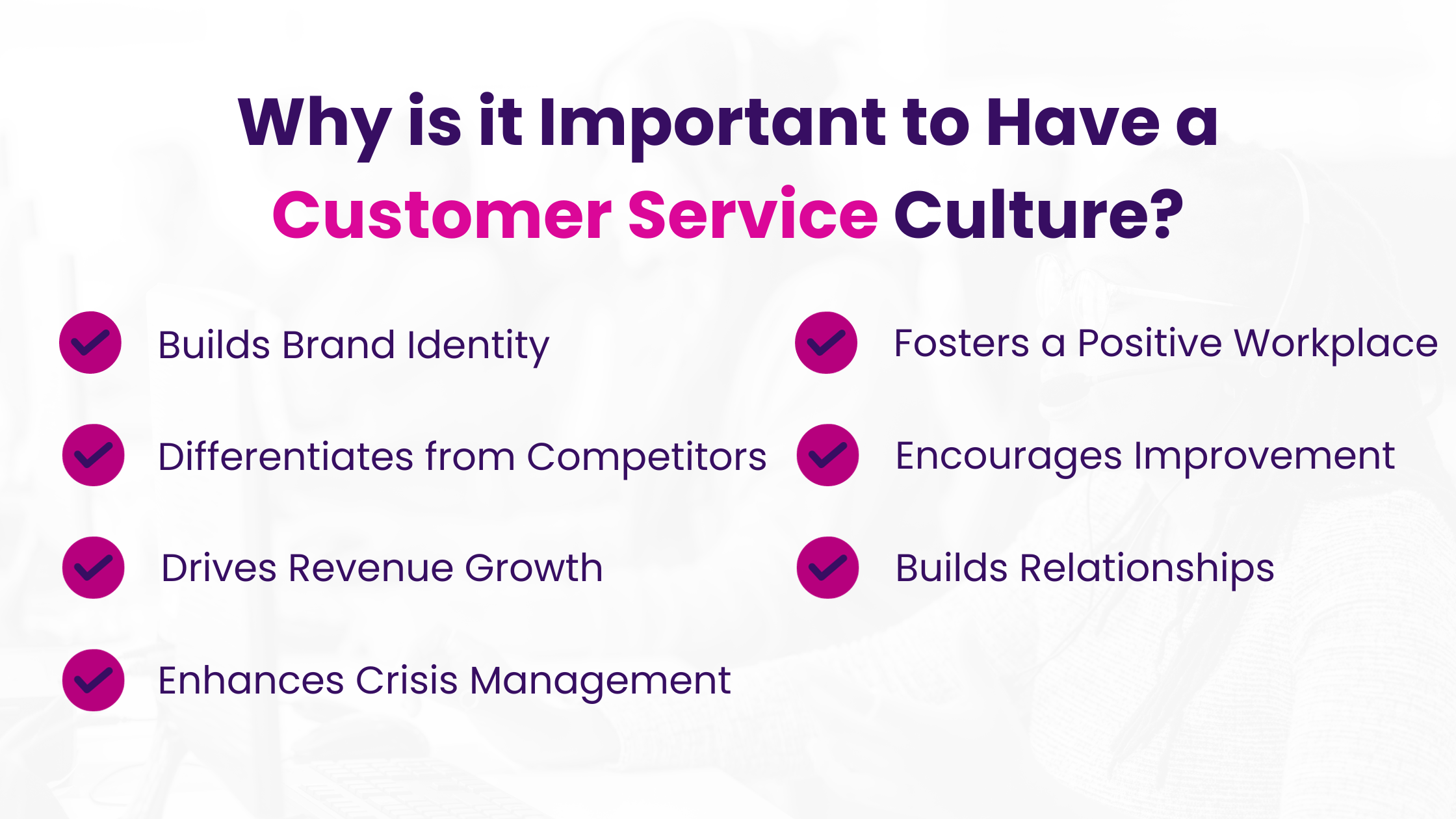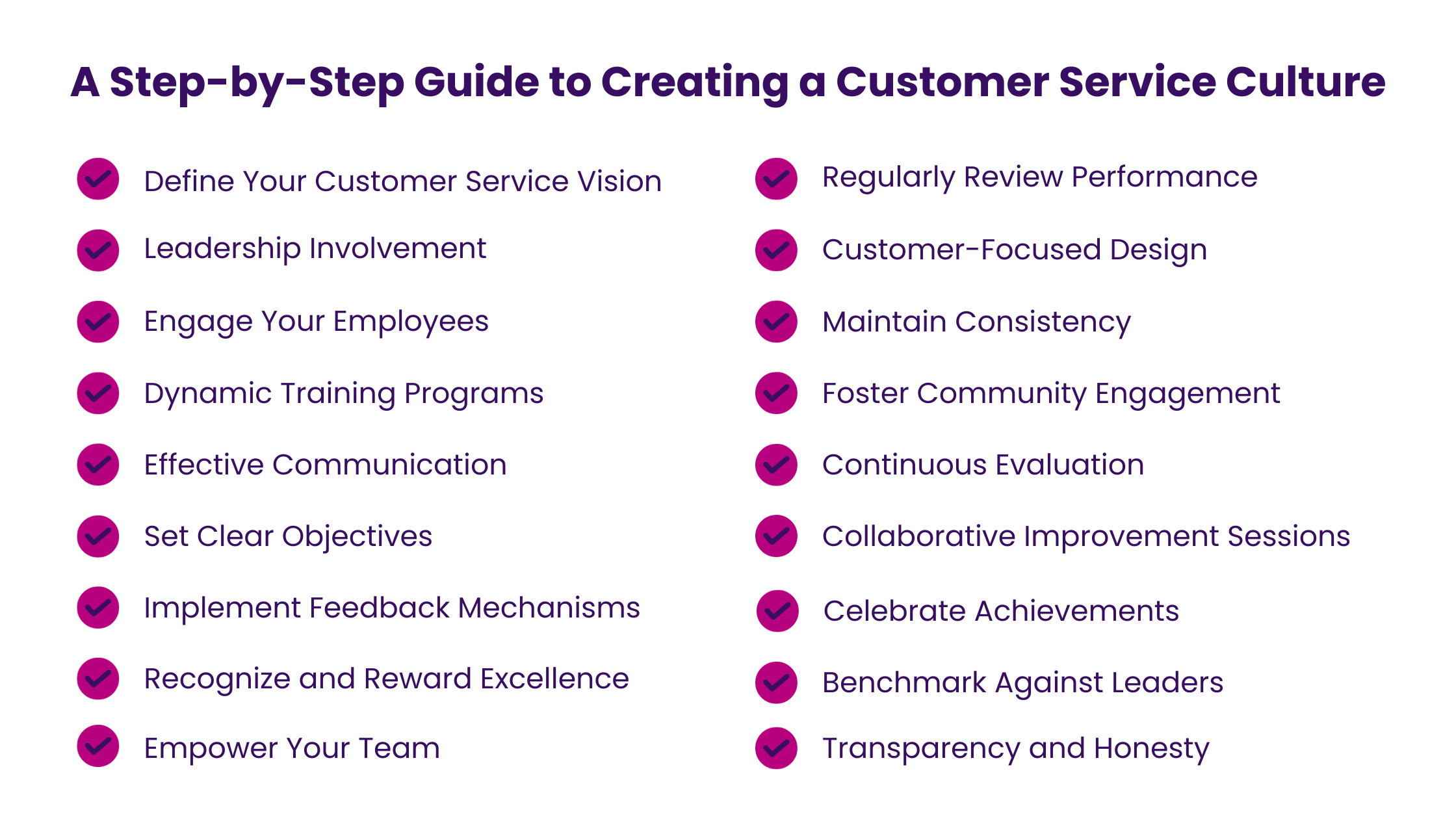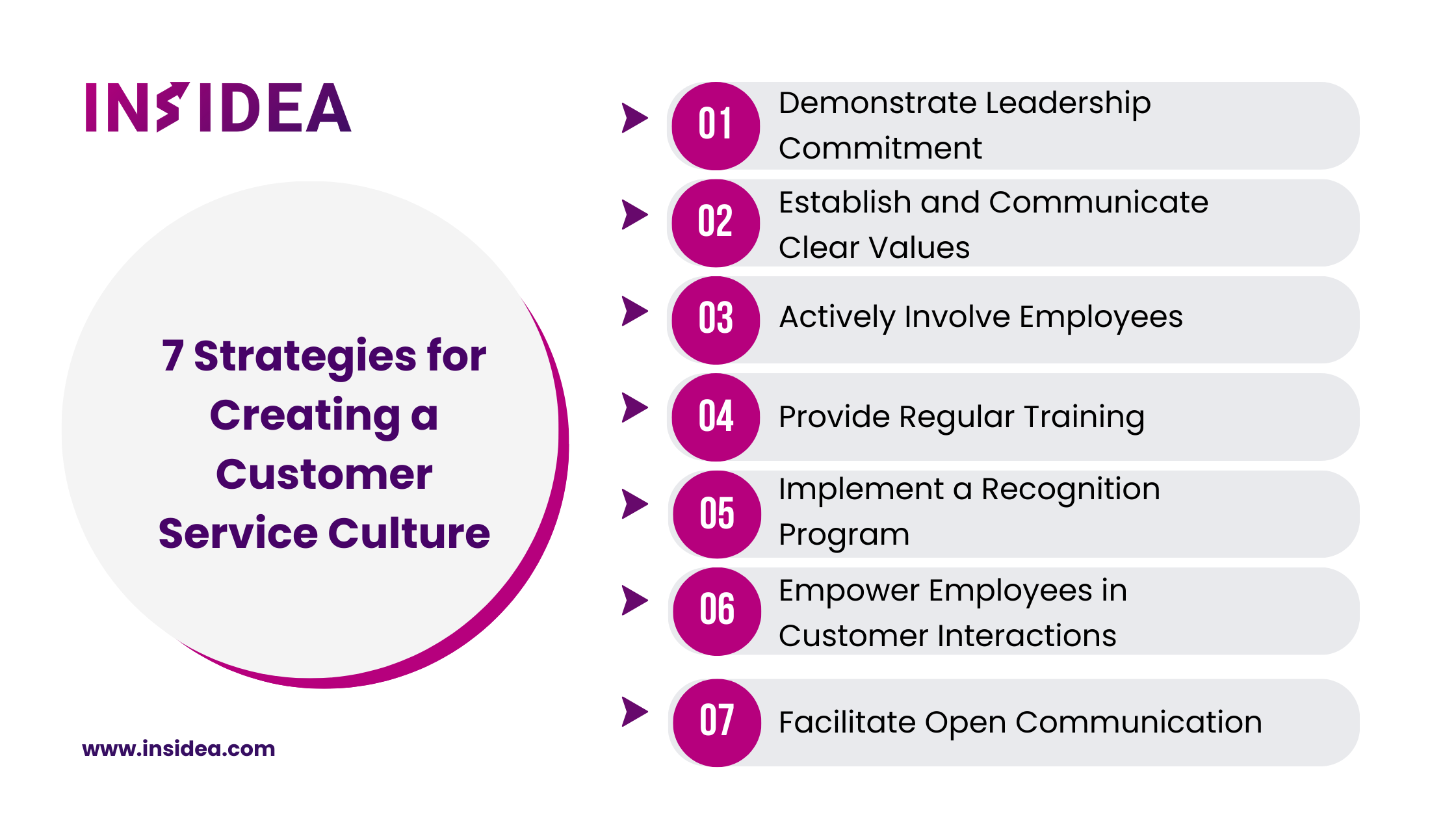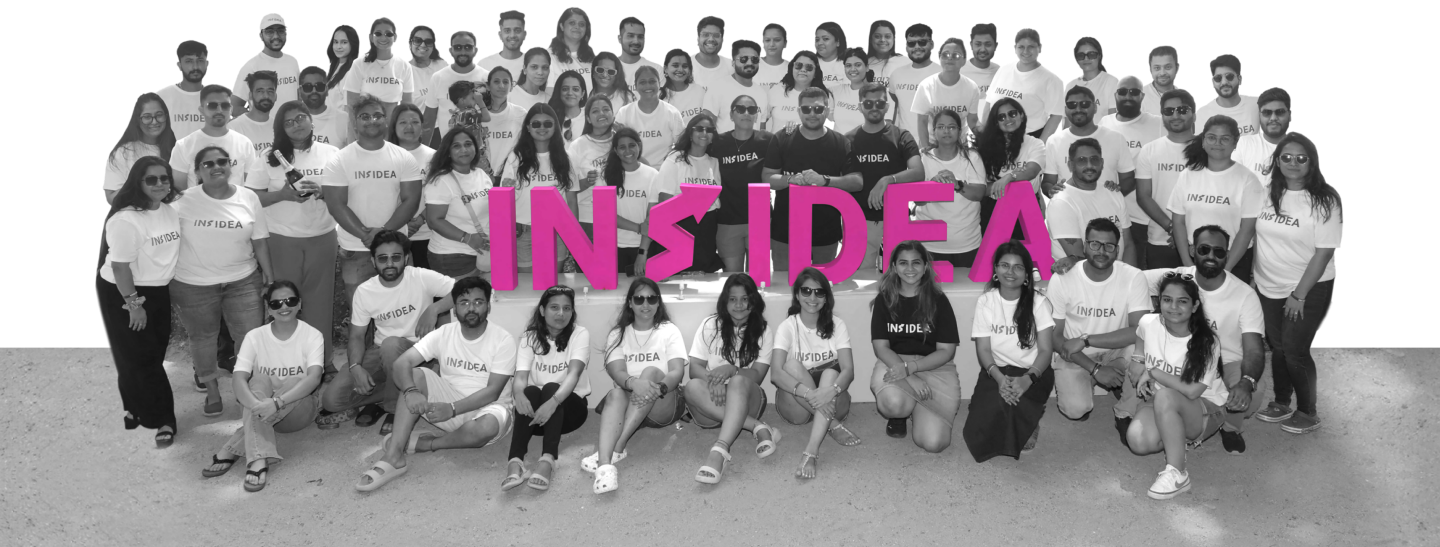Have you ever wondered what truly sets apart thriving businesses in today’s hyper-competitive marketplace? One key factor is their customer service culture. It’s not just about answering questions or solving problems – it’s about exceeding customer needs and making them feel valued during every interaction.
According to a study, consumers are 5.1 times more likely to recommend a brand after an excellent customer service experience. This blog delves into the magic of customer service culture and how it can elevate your business from good to great.
What is Customer Service Culture?
Customer service culture is a set of values, beliefs, and behaviors that prioritize customer satisfaction and experience in every aspect of a business. It’s about creating a mindset among employees where serving the customer well is ingrained in every action and decision. A robust customer service culture ensures customers feel valued, heard, and appreciated.
Why is it Important to Have a Customer Service Culture?

Incorporating a customer service culture is crucial for several reasons. It leads to increased customer loyalty, higher satisfaction rates, and positive word-of-mouth, which are all essential for business growth.
Moreover, a strong customer service culture results in a motivated workforce, as employees feel more engaged and aligned with the company’s values. This alignment is essential for both employee retention and customer satisfaction.
Furthermore, a well-established customer service culture:
- Builds Brand Identity: It helps shape and reinforce your brand’s identity. Customers often remember how they are treated and associate these experiences with your brand, influencing their perception and decision to return or recommend your services to others.
- Differentiates from Competitors: A customer service culture can be a significant differentiator in industries where products and services are similar. It provides an edge over competitors by offering a unique and memorable customer experience.
- Drives Revenue Growth: Satisfied customers are more likely to make repeat purchases and try new offerings. Their loyalty can translate into consistent revenue streams and opportunities for upselling and cross-selling.
- Enhances Crisis Management: In times of crisis or when mistakes happen, a strong customer service culture ensures your team is prepared to handle customer complaints and issues effectively. This approach can turn potentially negative experiences into opportunities for demonstrating commitment and responsiveness.
- Fosters a Positive Workplace: When a company focuses on customer service, it often creates a positive work environment for its employees. Happy employees are more likely to provide better customer service, creating a virtuous cycle that benefits everyone involved.
- Encourages Improvement: A culture focused on customer service often values feedback and continuous improvement. This leads to regular updates in processes and services, ensuring the company stays ahead of customer needs and industry trends.
- Builds Relationships: By consistently providing excellent customer service, businesses can build long-lasting relationships with their customers. These relationships often lead to a loyal customer base that supports the business over time.
A Step-by-Step Guide to Creating a Customer Service Culture

Creating a customer service culture is a strategic process that requires dedication and consistent effort from the top down. Here are the steps to build and sustain a strong customer service culture:
Step 1: Define Your Customer Service Vision
Clearly describe what outstanding customer service looks like for your business. Make this vision a prominent part of your company’s narrative, ensuring it resonates with every team member.
Step 2: Leadership Involvement
If you’re in a leadership role, lead by example. Actively participate in customer service activities and demonstrate the dedication and care you expect from your team.
Step 3: Engage Your Employees
Regularly engage with your employees to discuss their experiences and challenges in customer service. These discussions should be structured yet open, allowing for honest and constructive feedback.
Step 4: Dynamic Training Programs
Organize training sessions that are interactive and relevant. Incorporate varied methods like workshops, role-playing, and case studies to keep the material engaging and practical.
Step 5: Effective Communication
Regularly communicate the value and examples of excellent customer service. Use various channels like email, internal newsletters, or team meetings to share success stories and reinforce the customer service message.
Step 6: Set Clear Objectives
Establish clear and achievable customer service goals for each team member. These objectives should be specific and measurable, providing a clear direction for what is expected.
Step 7: Implement Feedback Mechanisms
Create easy-to-use systems for collecting feedback from customers and employees. Act on this feedback to make continuous improvements in your customer service approach.
Step 8: Recognize and Reward Excellence
Publicly acknowledge and reward employees with exceptional customer service. This recognition can range from verbal acknowledgments to formal rewards.
Step 9: Empower Your Team
Allow members to make customer-focused decisions within certain guidelines. This empowerment can lead to more responsive and personalized customer service.
Step 10: Regularly Review Performance
Use metrics like customer satisfaction scores and feedback to assess the effectiveness of your customer service efforts. Adjust your strategies and training based on these insights.
Step 11: Customer-Focused Design
Ensure that your physical and digital spaces are designed with the customer in mind, reflecting your commitment to service in every aspect.
Step 12: Maintain Consistency
Uphold consistent customer service standards across all departments and touchpoints. This consistency is crucial for building trust and reliability with your customers.
Step 13: Foster Community Engagement
Align your customer service efforts with community and social responsibility initiatives. This helps build a positive brand image and deepens customer relationships.
Step 14: Continuous Evaluation
Regularly reassess your customer service culture to ensure it remains relevant and effective. Be open to evolving your strategies in response to new challenges and opportunities.
Step 15: Collaborative Improvement Sessions
Encourage team brainstorming sessions focused on improving customer service. These sessions should be constructive, allowing every team member to contribute ideas.
Step 16: Celebrate Achievements
Share and celebrate both big and small customer service successes within your team. This fosters a positive environment and emphasizes the value of great service.
Step 17: Benchmark Against Leaders
Look to industry leaders in customer service for inspiration and best practices. Consider how their strategies could be adapted to fit your business.
Step 18: Transparency and Honesty
Maintain an atmosphere of transparency regarding the successes and challenges in your customer service efforts. This honesty fosters trust and collaboration within your team.
The Best Examples of Customer Service Culture
Check out the best examples of companies that have incorporated an incredible customer service culture into their process:
1. INSIDEA: Your Outsourcing Powerhouse

Under the visionary leadership of Founder and CEO Pratik Thakker, INSIDEA has cultivated a customer service culture that transcends traditional support models, emphasizing customer satisfaction as a cornerstone of business success.
“Our mission,” Pratik asserts, “is to not only meet customer expectations but to exceed them, turning every interaction into a building block for lasting relationships.” This philosophy is the bedrock of INSIDEA’s operations, where the integration of certified customer support experts into client teams isn’t just a service but a partnership for collaborative growth and innovation.
INSIDEA’s commitment to 24/7 customer support is a testament to its understanding of the modern marketplace’s dynamics, where uninterrupted, high-quality engagement is key. This approach significantly enhances customer satisfaction and enriches the overall user journey.
Furthermore, INSIDEA’s focus extends beyond issue resolution to elevating the overall brand experience at every customer touchpoint. The company’s diverse global talent pool and strategic operational models, including time zone alignment and risk-free trial periods, are crucial in delivering versatile and impactful customer service solutions.
INSIDEA’s approach to customer service, guided by Pratik Thakker’s visionary insights, is more than a business strategy; it’s a commitment to excellence and customer delight. This commitment positions INSIDEA as a service provider and a vital partner in its clients’ journey toward business growth and sustained customer loyalty.
2. Slack: A Culture of Continuous Improvement

Source: Slack
Slack‘s company culture exemplifies a continuous growth and adaptability philosophy deeply rooted in values like diligence, curiosity, and empathy. This culture shapes both their workplace and product development, focusing on understanding and responding to the needs and experiences of users and employees.
A key aspect of this culture is creating positive and memorable employee experiences. This approach ensures lasting changes in workplace habits and behaviors across teams of all sizes.
In their hiring process, Slack seeks individuals who resonate with these core values. The interview questions are uniquely designed to spark meaningful conversations, aiming to understand candidates beyond their professional qualifications.
The company’s leadership, including CEO Stewart Butterfield, prioritizes honesty and employee transparency, fostering a psychologically safe and inclusive environment.
“It’s very difficult to design something for someone if you have no empathy,” said Stewart Butterfield.
Slack also implements practices that respect employees’ time, like discouraging communication outside work hours, and promotes courteous internal communication, contributing to a respectful and balanced work-life dynamic.
3. Zappos: Culture as a Cornerstone

Source: Zappos
Zappos is widely recognized for its unique approach to integrating company culture into its brand identity. A key aspect of this approach is their hiring process, which strongly emphasizes cultural fit alongside technical skills. Notably, Zappos has an unconventional offer for new hires: a $2,000 bonus if they choose to leave after their initial training period.
This initiative ensures that only employees who truly resonate with Zappos’ values and culture remain with the company. Remarkably, only 2-3% of new hires accept this offer, underscoring the effectiveness of their hiring practices in selecting the right candidates.
Zappos’ hiring methods extend beyond the usual interviews. For instance, the company evaluates candidates’ interpersonal skills through the “Nice Guy” Test, where the treatment of shuttle drivers (if used) indicates a candidate’s suitability.
Regarding this process, former CEO Heish said, “A lot of our candidates are from out of town, and we’ll pick them up from the airport in a Zappos shuttle, give them a tour, and then they’ll spend the rest of the day interviewing.” “At the end of the day of interviews, the recruiter will circle back to the shuttle driver and ask how he or she was treated. It doesn’t matter how well the day of interviews went, if our shuttle driver wasn’t treated well, then we won’t hire that person.”
This focus on cultural fit manifests CEO Tony Hsieh’s belief that getting the culture right leads to positive outcomes like exceptional customer service, contributing to Zappos’ high customer satisfaction and strong brand image.
Additionally, Zappos employs a unique system for candidate applications, where individuals create profiles on a specialized company social media site, often including video cover letters. This innovative approach helps Zappos identify skilled candidates harmonious with the company’s core values.
4. X (Twitter): The Impact of Cultural Shifts

Source: X (Twitter)
X’s (Twitter) company culture has significantly changed, particularly following Elon Musk’s takeover. These changes have led to a transformation from what was once celebrated as a vibrant and collaborative work environment to a period of uncertainty and stress among employees.
One of the major shifts includes laying off a large portion of the workforce, approximately 3,700 employees, which represented a significant reduction from the company’s previous size. This reduction in staff has inevitably led to increased workloads for the remaining employees, affecting the overall morale and atmosphere at the company.
Furthermore, policy changes under the new leadership have been impactful. The cancellation of remote work policies and the required staff to return to the office full-time mark a significant departure from the company’s previous flexible work arrangements. This shift has contributed to the sense of uncertainty about the future of the company’s culture.
Employees have expressed their concerns on platforms like Blind, noting the unpredictable nature of management and communication since the takeover. The changes have affected current employees and shaped public perception of the company. Employees using the hashtag #LoveWhereYouWorked on X (Twitter) to share their past experiences exemplify the shift in culture, indicating a sense of nostalgia for the previous work environment.
The changes at X (Twitter) highlight how sensitive company culture is to broader organizational shifts, particularly those related to leadership and strategic direction. These changes can profoundly impact internal dynamics and how a company is viewed externally. As the company moves forward, it faces the challenge of defining its new culture and aligning it with the vision and values of its new leadership.
7 Strategies for Creating a Customer Service Culture

By implementing these strategies, you can cultivate a robust customer service culture in your organization:
- Demonstrate Leadership Commitment: Leaders should actively model customer service excellence. This could involve regularly participating in customer service training, handling customer complaints personally, or publicly acknowledging team members who provide exceptional service.
- Establish and Communicate Clear Values: Define your customer service values and vision and communicate them to every team member. Consider creating a customer service charter or manifesto and display it prominently in the workplace.
- Actively Involve Employees: Create forums or regular meetings where employees can voice their opinions on customer service practices. Encourage them to share their experiences and ideas for improvement. This could be facilitated through suggestion boxes, regular team meetings, or anonymous surveys.
- Provide Regular Training: Organize ongoing customer service training sessions that are practical and interactive. Use role-playing exercises, real-life scenarios, and guest speakers to keep the training engaging and relevant.
- Implement a Recognition Program: Establish a program to recognize and reward excellent customer service. This could include an employee of the month awards, service achievement badges, or even small bonuses for outstanding interactions.
- Empower Employees in Customer Interactions: Develop guidelines that allow employees autonomy to solve customer issues on the spot. This might involve setting limits to offer refunds, discounts, or other resolutions without managerial approval.
- Facilitate Open Communication: Ensure that there are effective channels for internal communication regarding customer service. This could involve regular newsletters, a dedicated section on the internal company portal for customer service updates, or periodic briefings on customer feedback trends.
Cultivating a customer service culture is an ongoing process requiring commitment at all organizational levels. By embedding this culture, businesses can enhance their customer satisfaction and improve their overall performance and competitiveness in the market.
Remember, a strong customer service culture is not just about policies and procedures; it’s about creating an environment where every customer interaction is an opportunity to demonstrate your company’s commitment to exceptional service.
Unlock Customer Service Excellence with INSIDEA’s Expertise!

Are you ready to transform your customer service and take your customer experience to the next level? INSIDEA is here to guide you through every step of the way, ensuring that your support team is empowered to deliver exceptional service.
As experts in customer support solutions, we pride ourselves on helping businesses optimize their support strategies for maximum efficiency and customer satisfaction. Reach out today to discover how INSIDEA can revolutionize your customer support and contribute to your business success!
- Tailored Support Strategies: At INSIDEA, we understand that every business is unique. That’s why we work closely with you to develop customized support strategies that align with your specific needs and goals.
- Industry Expertise: Our team brings a wealth of experience and industry knowledge to the table, ensuring that you have access to the best practices and insights in customer support.
- Customer Commitment: Your customers’ happiness is our top priority. We are dedicated to helping you exceed their expectations and foster long-lasting relationships.
Ready to elevate your customer support experience? Book a meeting with our experts today and start your journey towards outstanding customer service and satisfaction.










































